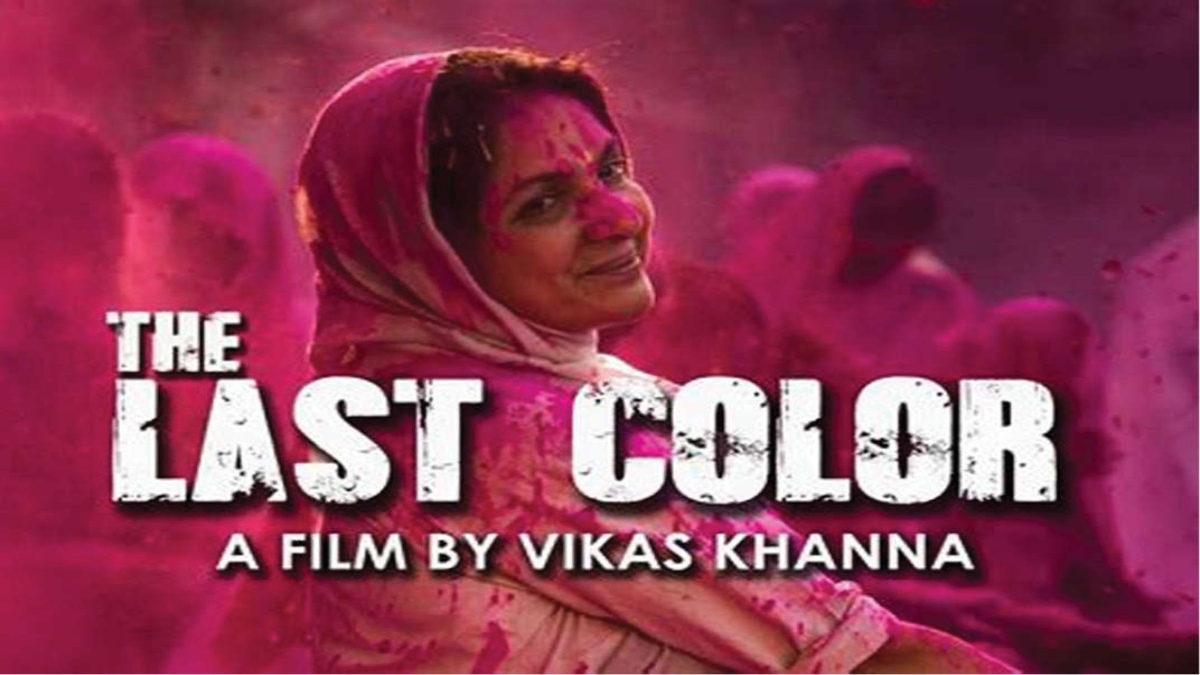


“Can the city of the dead also outlast the rest of extant civilisation? Can a vast number of its women in white really remember the meaning of color? Can a foundling from a garbage dump pay homage to a corpse in the joyous pinks and reds of Holi? Some say, those can only happen in Varanasi,” reads the description on Celebrity Chef Vikas Khanna’s novel ‘The Last Color’ which has now been made into a motion picture, directed by Khanna himself. Based on a screenplay by Vibhav Srivastava, the film addresses an age-old taboo surrounding widows in Varanasi who are forced to live a life of total abstinence and are prohibited from taking part in any festivities, especially Holi, the Indian festival of colors. ‘The Last Color’ starring veteran Indian actress Neena Gupta in the central role of a Varanasi-based Hindu widow named Noor is streaming on Amazon Prime Video. It also stars Aqsa Siddiqui in the pivotal role of Chhoti, a 9-year old Dalit tightrope walker, who befriends Noor and hopes to add color to her life.
Famous American author Mark Twain once said of the ancient Indian city of Varanasi, also known as Benares, or Kashi, which is situated on the banks of the river Ganges in Uttar Pradesh, “Benares is older than history, older than tradition, older even than legend and looks twice as old as all of them put together”. The city holds an important place in Hinduism and Jainism and is known to have played a pivotal role in the development of Buddhism. Tulsidas wrote the ‘Ram Charit Manas’ as well as ‘Vinaya Patrika’ in Varanasi. Various important figures of the Bhakti movement, including Kabir and Ravidas, were born here. Also, Guru Nanak, the first of the ten Sikh Gurus, made an important visit to Varanasi in the early 16th century. Lots of Hindus from across the country travel to Varanasi to spend their final days in the holy city.
What really makes the city so special is the river Ganga. And the unique feature about the Ganges in Benares is that it is Uttarvahini Ganga. In other words, the river has a northward flow even though it generally flows southeasterly during its course from the Himalayas to the Bay of Bengal. Now, Khanna seems to have a strong fascination for the holy city of Benares. And it oozes in every frame of ‘The Last Color’. Subhranshu Kumar Das’ cinematography speaks for itself. But, it’s not just limited to the visuals, for it’s also quite evident in the powerful soundscape of ‘The Last Color’. Plainly put what little the film lacks in terms of the imagery it more than makes up for it in the sound department. Now, we have seen Benares in countless films but it’s difficult to think of another film work of fiction which makes Benares sound so authentic to our ears. This level of aural detailing greatly adds conviction to the film’s realistic subject. To truly appreciate the grandeur of Varanasi one needs to explore it in all its glory and splendour with the majestic Ganges and its famous ghats. Watching Khanna’s ‘The Last Color’ is perhaps the next best option.
Another strong aspect of ‘The Last Color’ is wonderful performances on offer. Neena Gupta delivers an endearing performance as Noor, always looking simple yet charming in white sari. Aqsa Siddiqui is also wonderful in the role of Chhoti. The scenes between her and Gupta are pure gold. They make us laugh and cry. Sometimes we feel enthralled. At other times, we feel totally dejected. Aslam Shekh who plays the story’s main antagonist Raja makes his morally corrupt policeman character look menacingly deplorable. Every time he appears on the screen he succeeds in creating a great sense of unease and revulsion. Although, he plays a cop in the film his dishevelled look and boorish mannerisms make him look like some dacoit on the run. Rudrani Chettri also delivers a memorable performance, essaying the part of a brutalised eunuch named Anarkali.
‘The Last Color’ is a reminder that the art of filmmaking is not about making things big and grand but it is actually about making the canvas look appealing to the eye. You just need to pick up a clean state and throw in a few colors with a handful of artistic strokes and what you have is a pure cinema that can endure the test of time. And, The Last Color promises to be just that. It is said that cinema is all about artifice but the artifice works only if the artist uses it to tell the truth. And Khanna, to his credit, only seems interested in telling the truth about human vices and virtues through his story. Just as Picasso had said, “Art is a lie that makes us realise the truth.” ‘The Last Color’ is loaded with great optimism and one just can’t hope to watch a better film during these pandemic times. As the end credits begin to roll, Khanna beautifully invokes Tagore’s iconic poem, “Where the mind is without fear and the head is held high…”